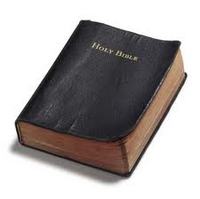Christians divide the Bible
into two sections, the Old and New Testaments. (Note: I continue to refer to
the Old Testament by its traditional name within the church rather than the
more contemporary designation, “The Hebrew Scriptures.” I do this because although
the Jewish people consider the Old Testament books Scriptural, they collect
them in a different order, which in and of itself reflects a different
perspective on God’s work in the world, and they have a different understanding
of how their Scripture functions. Out of respect for these differences,
therefore, when I am referring to Christian use of the Hebrew Scriptures, I
call them the Old Testament.) Almost all of the books of the Old Testament were
written in Hebrew, although parts of Daniel and a few other segments were
written in Aramaic, another Semitic language. It is difficult to assign these
books exact dates, but we do know that these books were written down over the
course of nearly 1000 years. The earliest stories–those from Genesis and Exodus,
for instance–began as oral history as generation after generation passed on the
stories of God’s work within their community. They were eventually written
down, through the collective memory of the people. Other books, such as Hosea
and Jeremiah, were written down immediately, when prophets received an
authoritative “word” from the Lord.
This afternoon I will post a follow up: What is the New Testament?
The Old Testament books were compiled as a whole by about 200 BC. Around this time they were also translated from Hebrew into Greek. This Greek translation of the Old Testament books is called the Septuagint, and it was this Bible that Jesus used. Whenever the Gospel writers or Paul or other writers of the books of what we call the New Testament refer to “the Scriptures” or to “The Law of Moses, the Prophets and the Psalms,” they are referring to the books of the Old Testament, and usually to the Septuagint in particular (See, for example, Luke 24:44, where Jesus says: “This is what I told you while I was still with you: Everything must be fulfilled that is written about me in the Law of Moses, the Prophets and the Psalms.”) The fact that Jesus referred to these books as Scripture, and underscored the fact that the Law, the Prophets and the Psalms point toward him, gives them additional value and significance to Christians.
For many years, the earliest copy we had of the Old Testament was dated 900 AD. In other words, we had a document that was anywhere from 1500-2000 years away from the original text. Even if we believe that the original was God’s word, how on earth could we assume that the copy was faithful to the original? This copy from 900 AD is called the Masoretic Text because it was transcribed over time by a group of scribes called the Masorites. Then, in the middle of the 20th century, a peasant woman discovered a collection of ancient Jewish writings. We now call them the Dead Sea Scrolls. These scrolls provide manuscripts of the Old Testament that predate Jesus’ life. We have a copy of the book of Isaiah, for example, that scholars date to around 100 BC. This book of Isaiah is 1000 years older than the Masoretic text. Despite this huge span of time, when you compare the Dead Sea Scroll text of Isaiah to the Masoretic text of Isaiah, you will find that there is 95% consistency between the two, and that the 5% that is not identical is only a matter of punctuation and spelling. In other words, these texts were recognized by the scribes as God’s Word, and as a result they were transcribed with utmost faithfulness and integrity through the ages.
This process may seem somewhat arbitrary or imprecise. There are many details we don’t know about how they were recorded and compiled. But we do know that all of the books that became what Christians call the Old Testament were recognized by the community of faith as inspired by the Holy Spirit, important in recording God’s work, and of ongoing relevance for the life of the community. These books contain an internal consistency. They all, through the voices of kings and poets, prophets and peasants, women and men, reflect the work of the same God and tell the same story of creation, fall, and redemption, time and again.


